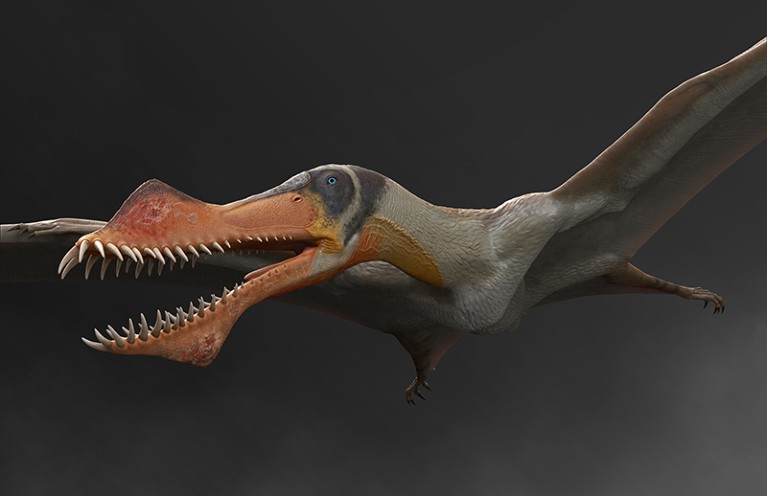Hello Nature readers, would you like to get this Briefing in your inbox free every day? Sign up here.

The pterosaur Anhanguera santanae, a close relative of the dinosaurs, had a wingspan of almost 4 metres.Credit: Raul Ramos
Fossil bounty will go back to Brazil
Brazil has won a legal battle over 45 dinosaur and animal fossils after a French court ruled that they had been removed illegally. Next, the court will rule on the fate of a spectacular pterosaur fossil, which palaeontologists flagged up five years ago after it was listed on eBay. Authorities in Brazil suspect that the fossils were taken from the country in the 1980s and 1990s, but have not said who might have done so. All fossils in Brazil belong to the government, whether they are found on public or private land.
An X-ray map of the Universe
Next Friday, a joint German–Russian mission called Spectrum-Roentgen-Gamma (SRG) will launch into space to create an unprecedented map of the sky in high-energy ‘hard’ X-rays. This part of the spectrum offers a view of otherwise faint objects in the Universe and will give researchers a new way to track its expansion and acceleration over the aeons. For Russia, the SRG marks a “return to world-class science”, says high-energy astrophysicist Mikhail Pavlinsky.
Ebola spreads to Uganda
A five-year-old boy in Uganda is the first confirmed case of Ebola there since an outbreak of the virus emerged in the neighbouring Democratic Republic of the Congo (DRC) ten months ago. The outbreak in the DRC is now the second deadliest on record. Nearly 1,350 people have died out of just over 2,000 confirmed and probable cases of the virus, according to the World Health Organization.
FEATURES & OPINION
The very model of a modern model organism
When researchers scoured the tree of life for the perfect model organism, they hit on one of the planet’s smallest and most abundant primates: mouse lemurs. They are more closely related to humans, genetically speaking, yet still have many of the advantages of mice in terms of small size, rapid reproduction and relatively large litters. But first, researchers are getting to know the animals in the wild, using citizen science to build a living genetic library of wild mouse lemurs in the forests of Madagascar.
Mouse lemurs are also super cute. See them — and researchers in Madagascar — in action in this Nature video.
Beautiful equations in documents with LaTeX
A 2014 study that pitted the LaTeX typesetting language against Microsoft Word’s built-in equation editor ignited a fiery debate about the merits of total control versus ease of use. (For what it’s worth, the study found that LaTeX users were slower and made more errors, but enjoyed themselves more.) Now that even Microsoft has ditched Word’s built-in editor if favour of native support for LaTeX’s equation-writing syntax, it’s time to tackle it yourself — if you haven’t already. Nature Toolbox explores the online tools and software add-ons that can make things easier.
Journals should compete for funding, too
Imagine a scientific journal in which readers don’t pay for access, authors don’t pay for publication and reviewers are paid for each report. That’s how things are done at Swiss Medical Weekly, which pays its bills thanks to a consortium of academic and medical bodies that has evaluated the journal’s qualities. The journal’s director, neuropathologist Adriano Aguzzi, describes how a system in which funders award competitive grants directly to journals could help to usher in open access without creating perverse incentives to publish more papers.
